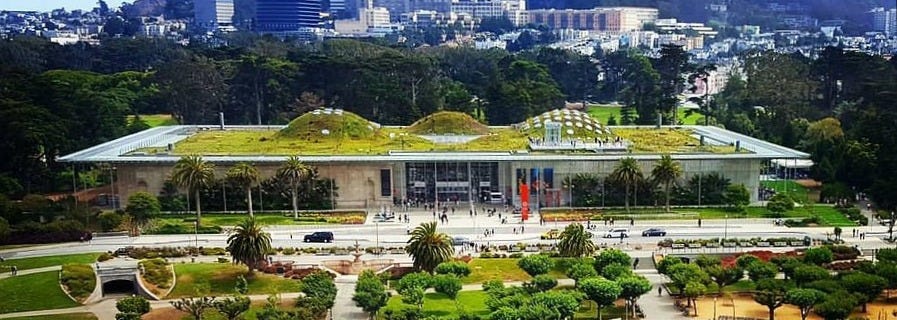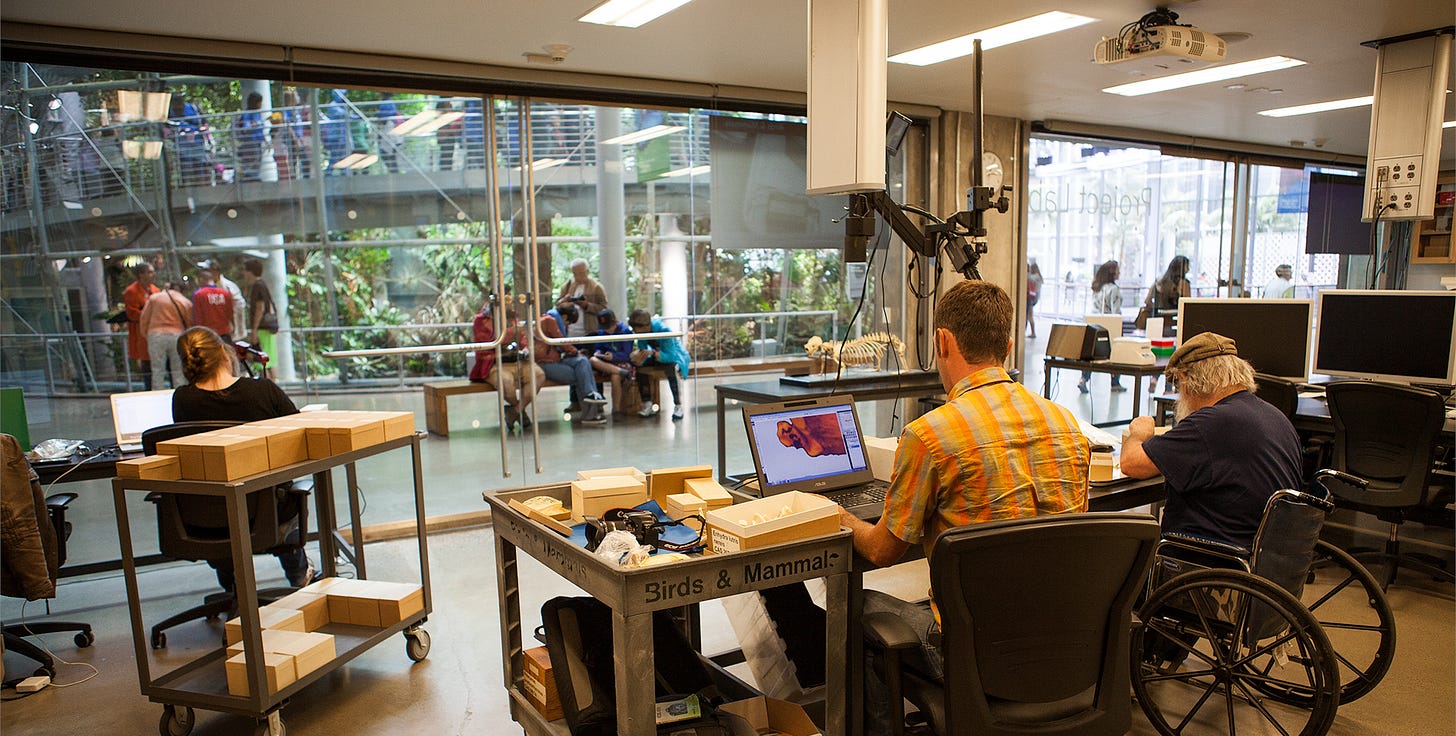Designing Learning Ecosystems
Building strategic partnerships, infrastructure, and access to digital tools for youth-centered learning in San Francisco
During my time as a Digital Learning Specialist at the California Academy of Sciences, I had the opportunity to help shape one of the Bay Area’s most ambitious and collaborative learning initiatives: Hive Bay Area. The project sat at the intersection of youth development, digital access, and community infrastructure, three areas I’ve long cared about. As part of a cross-institutional team that included the San Francisco Public Library, Bay Area Video Coalition, and KQED, we set out to create a networked model for learning in the region rooted in the principles of Connected Learning and designed to serve youth equitably.
At the Academy, my focus was on managing the technologies, tools, and digital platforms that would live inside this new ecosystem. That meant more than just choosing hardware—it meant designing the conditions for access: how teens would interact with tools, how educators and mentors would facilitate those interactions, and how we’d support a space that could grow with the needs of the learners inside it. I worked closely with architects and the design team to ensure that the space itself wasn’t just physically functional, but digitally responsive, able to support everything from informal drop-in exploration to structured mentorship in creative tech.
One of the biggest challenges we faced was bridging the fragmentation between informal learning environments—museums, afterschool programs, libraries—and the young people we hoped to serve. In a region as rich in innovation and resources as the Bay Area, the opportunity gap wasn’t about lack. It was about access, navigation, and connection. Many youth had no clear pathways into the rich array of programs around them. Our job was to change that.
Through Hive Bay Area, we aimed to create more than a program. We wanted to build a learning infrastructure, a network of organizations committed to linking experiences, sharing data, and designing learning that reflected the interests, identities, and lived realities of the youth we served. For me, that meant working to establish partnerships with local organizations that could offer custom content, co-develop workshops and tools, and provide place-based relevance that was often missing from national platforms.
In parallel with the Hive’s physical and network planning, we also began prototyping what digital infrastructure could look like: mobile learning labs, youth-driven digital media festivals, and tools for tracking learning across different sites. We piloted online platforms for collaboration and hosted Hive pop-ups to experiment with formats, partnerships, and youth engagement in real time. Some of these experiments didn’t scale, but all of them taught us something about what was needed—and what was possible—when trust and creativity led the process.
Working in this space meant learning to move slowly when necessary, to respect community rhythms, and to negotiate institutional agendas in favor of youth-centered outcomes. That wasn’t always easy. Collaboration at this scale required deep alignment across organizations that often had very different cultures, funding models, and success metrics. But we found momentum in shared values, and in a collective sense that the Bay Area could model something different; something rooted locally, but connected to a national movement.
From a systems perspective, I was particularly invested in ensuring that the technologies we introduced weren’t extractive or temporary. We didn’t want digital engagement to be flashy and shallow—we wanted it to support real learning, deep exploration, and a sense of agency. That meant pushing for transparency in tool selection, embedding educator training into implementation, and building feedback loops that included youth voice at every level. It also meant helping shape a vision for a mobile learning vehicle that could bring connected learning into communities that wouldn’t naturally walk into a museum or a library.
Hive Bay Area was never just one thing. It was a strategy, a network, and a mindset. Over time, our planning expanded to include partnerships with the Exploratorium, Youth Radio, 826 Valencia, Black Girls Code, and dozens of others. We developed a youth advisory board to keep the work grounded and accountable. We worked with SRI International to conduct a landscape study that would map where connected learning already existed and where it was needed most.
Looking back, I see Hive Bay Area as one of the most meaningful expressions of what public institutions can do when they collaborate across boundaries. It was about linking access to opportunity. Designing infrastructure for equity and creating pathways for youth to move between spaces with recognition, continuity, and support.
As someone who’s always been interested in the edges of systems, how things connect, break, and evolve. I saw Hive as a chance to help shape a public learning architecture that could adapt to the people inside it. And that’s still the vision that drives me today.



